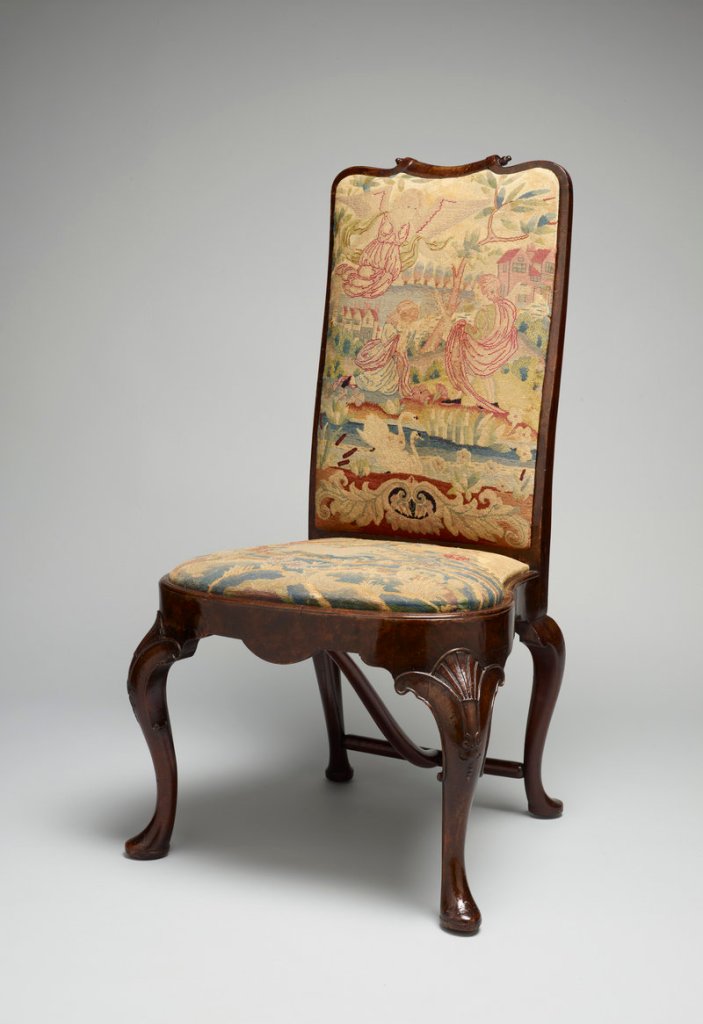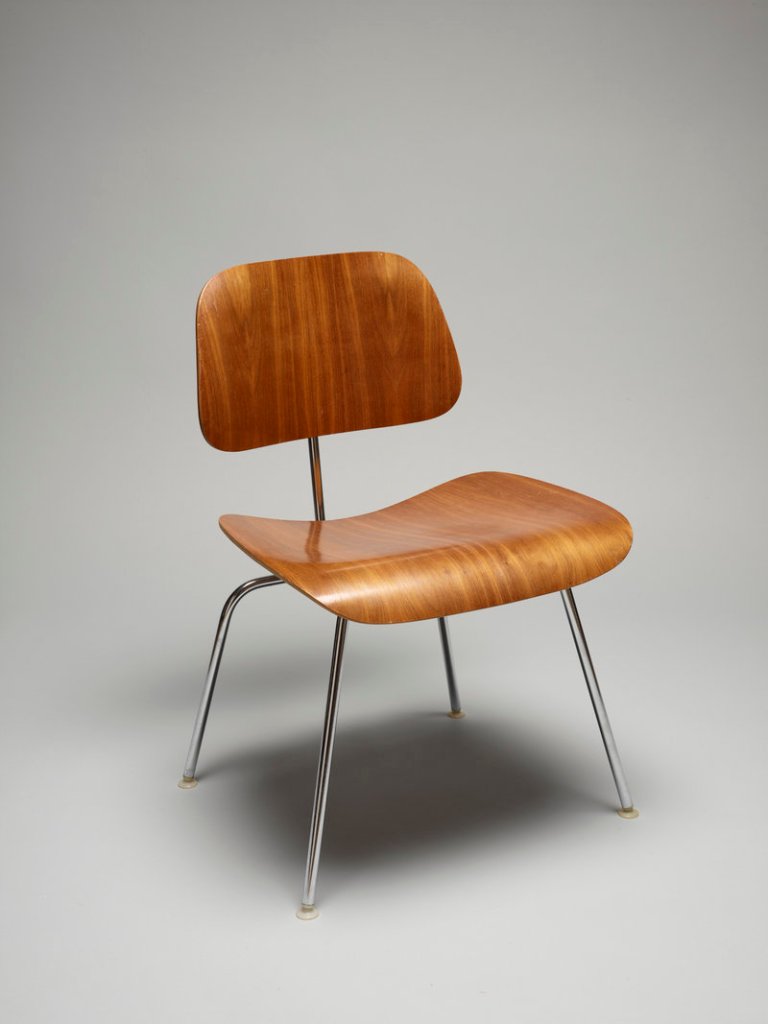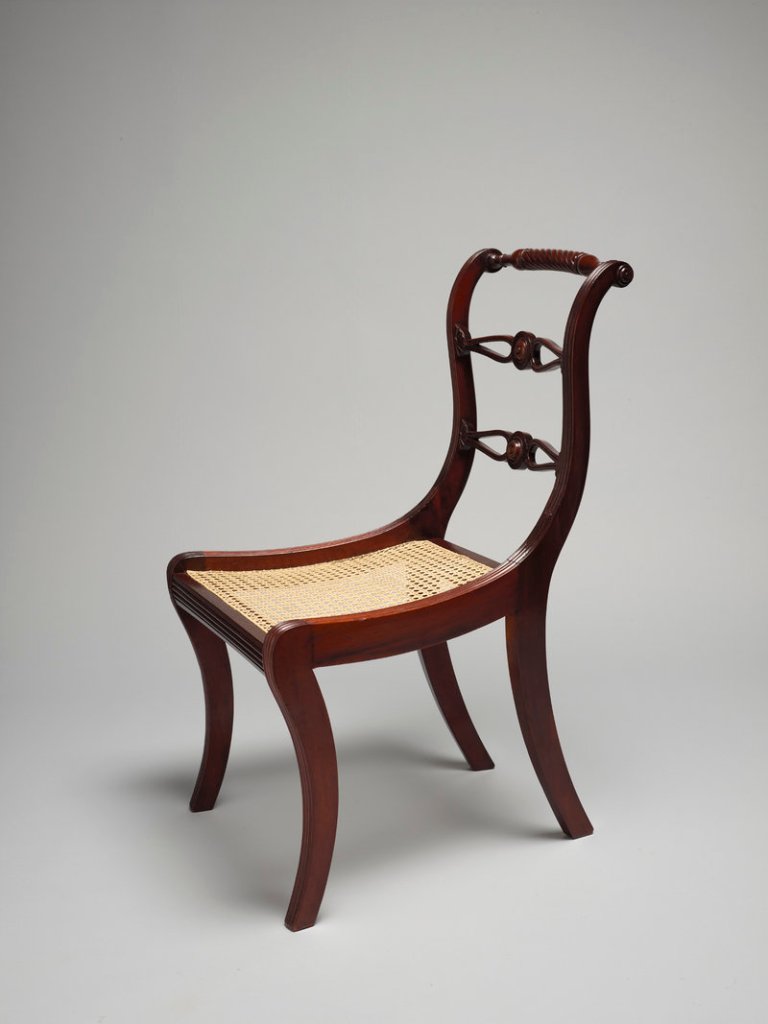In its latest exhibition, the Bowdoin College Museum of Art considers perhaps the most utilitarian and functional piece of furniture known to man: the chair.
Opening today, “Sit Down! Chairs from Six Centuries” examines our four-legged friends from the principles of design, decoration and function. The show includes one chair dating to 1500, as well as several made within the past few years.
The highlight of “Sit Down!” is an ornate, hand-carved great chair created by William Searle of Ipswich, Mass., in the mid-1600s. Its intricate floral and anthropological carvings make it a fine examples of baroque and renaissance design, said Laura Fecych Sprague, consulting curator of decorative arts a the museum.
A descendant of the maker gave it to Bowdoin in 1872, and for many years it served as the president’s chair during commencement exercises.
“It’s a really important piece of American furniture, and one of the true treasures of our collection,” Sprague said.
Many of the four dozen chairs on display are part of the college’s collection, although Bowdoin borrowed heavily from across Maine and New England to complete the exhibition. “Sit Down!” includes loans from many private collectors as well as the Maine Historical Society, Victoria Mansion and Historic New England, among other institutions.
The range is vast, with chairs spanning design movements from Gothic and rococo to modern and arts and crafts. Some chairs are remarkably functional. Others look like you wouldn’t dare sit in them.
There are Windsor chairs, Chippendale chairs, Bauhaus chairs and chairs that look like they came from an American grade school classroom circa 1950. There’s a gorgeous laminate maple chair designed by Frank Gehry in the early 1990s.
With its great tradition of furniture makers, Maine is well represented in “Sit Down!” Portland designer Christopher Campbell has a turtleback rocking chair in the show.
Aside from Brunswick maker Duane Paluska’s perfectly nonfunctional chairs, the funniest entry in “Sit Down!” is a chair from the mid-1800s that almost defies logic and belief. The piece was designed for use in a library, and includes a set of stairs that hinges near the seat.
Presumably, when the library patron desired a book from a shelf out of reach, he flipped the chair over to make use of the stairs, which rested in place against the frame and carried him to the upper shelves of the book case. It’s a beautiful piece of work in its craftsmanship, but not necessarily a thing of beauty. It’s clunky and heavy.
Alas, it also proved not terribly functional.
But it is quite funny, and causes one to pause and think about the role of function vs. comfort in our society over time, Sprague said.
“It’s interesting to see how our cultural preferences have evolved, and what our ideas of comfort and style are, and if the two have anything to do with each other,” she said. “Clearly, I think the exhibition suggests that our ideas of comfort are completely subjective.”
Sprague places the chairs in context by including a broad mix of artwork that features furniture and chairs among their subjects.
Of course, visitors are not allowed to sit in any of the chairs on display. Instead, the museum has arrayed a number of chairs throughout the gallery that serve as resting spots for visitors, and they are clearly marked. They, too, are works of art, and include examples of craftsmanship from Thos. Moser and others.
An opening reception for the exhibition will be at 5:30 tonight, followed by a gallery talk by curator Laura Fecych Sprague at 2 p.m. Friday. A gallery talk by Edward S. Cooke Jr., professor of American decorative arts at Yale University, will be at 4:30 p.m. Nov. 5.
Staff Writer Bob Keyes can be contacted at 791-6457 or at: bkeyes@pressherald.com
Send questions/comments to the editors.






